Tulip Flower Meaning, Spiritual Symbolism, Color Meaning & More
As I stand in the presence of a vibrant tulip garden, I am struck by the sheer elegance and grace of these remarkable flowers.
Their slender stems and radiant petals seem to whisper tales of love, beauty, and spiritual significance.
Tulips, with their diverse colors and rich history, have captivated the hearts and minds of many throughout the ages.
In this article, I invite you to join me on a journey through the enchanting world of tulip flowers, where we will explore their profound meanings and spiritual symbolism.
From their origins in the Ottoman Empire to their prominence in various cultural traditions, tulips reveal a story that transcends time and geography.
Together, let's unravel the hidden messages and sacred interpretations concealed within these exquisite blossoms, where beauty meets spirituality, and petals carry secrets of the heart and soul.

Key Takeaways
- Cultural Significance: In the Netherlands, tulips symbolize the country and are intricately linked to the Dutch monarchy, particularly represented by the orange tulip. Turkish and Persian cultures associate tulips with abundance, prosperity, and tales of separated lovers, adding rich cultural layers to their significance.
- Color Symbolism: Tulip colors carry profound symbolism. Red tulips symbolize deep love, white tulips signify purity, yellow tulips convey happiness, purple tulips symbolize royalty, elegance, and admiration, while orange tulips are linked to enthusiasm and energy. Pink tulips express affection, adding a gentle emotional touch.
- Special Occasions: Tulips symbolize rebirth and new beginnings, making them ideal for housewarmings. They also represent the 11th wedding anniversary and are popular choices for expressing love and passion on Valentine's Day.
- Mythological and Historical Ties: Tulips have fascinating mythological ties, especially in Turkish folklore, symbolizing the love between separated lovers. In Persian culture, they're associated with Nowruz and the concept of rebirth. Historical events like Dutch Tulip Mania add layers of significance to their symbolism.
- Symbolic Essence: Overall, tulips hold diverse symbolic meanings, representing cultural identity, love, new beginnings, and forgiveness. Their symbolism is woven into historical events, cultural traditions, and mythological tales, making them a captivating and versatile flower.
Unlocking the Hidden Symbolism of Tulips: What's the Secret Behind These Beautiful Flowers?
Origins
Tulips originally hail from Central Asia before reaching Turkey and then the Netherlands through the Ottomans' cultivation.
Dutch Varieties
Dutch tulips, with their multiple layers of single petals, are what we commonly recognize as traditional tulips. Double tulips have extra petals, and Parrot tulips feature elongated petals with scalloped edges.
Symbolism
Tulips often symbolize perfect love, inspired by tales like Farhad and Shirin from Turkish and Persian folklore. Additionally, their early spring bloom associates them with rebirth, akin to the daffodil.
Etymological Meaning Of The Tulip
| Location | Significant Year |
| Central Asia | Around 1000 AD |
| Turkey | Around 1000 AD |
| Holland | 1634 |
Tulips were introduced to Europe from Turkey. The first documented instance of a tulip flowering was in 1559 in Johann Heinrich Herwart's garden in Augsburg. The flower gained popularity in Holland starting in 1587, thanks to the efforts of Clusius.
During the 1630s, "Tulip mania" swept across the country, signifying a craze for tulips. The Turkish word for tulip influenced its name in various languages, such as Italian "tulipano" and Spanish "tulipan." However, in German, the "-an" ending was dropped, possibly mistaken for a suffix.
In 1705, the Tulip tree, a North American magnolia, earned its name due to its flowers' resemblance to tulips.
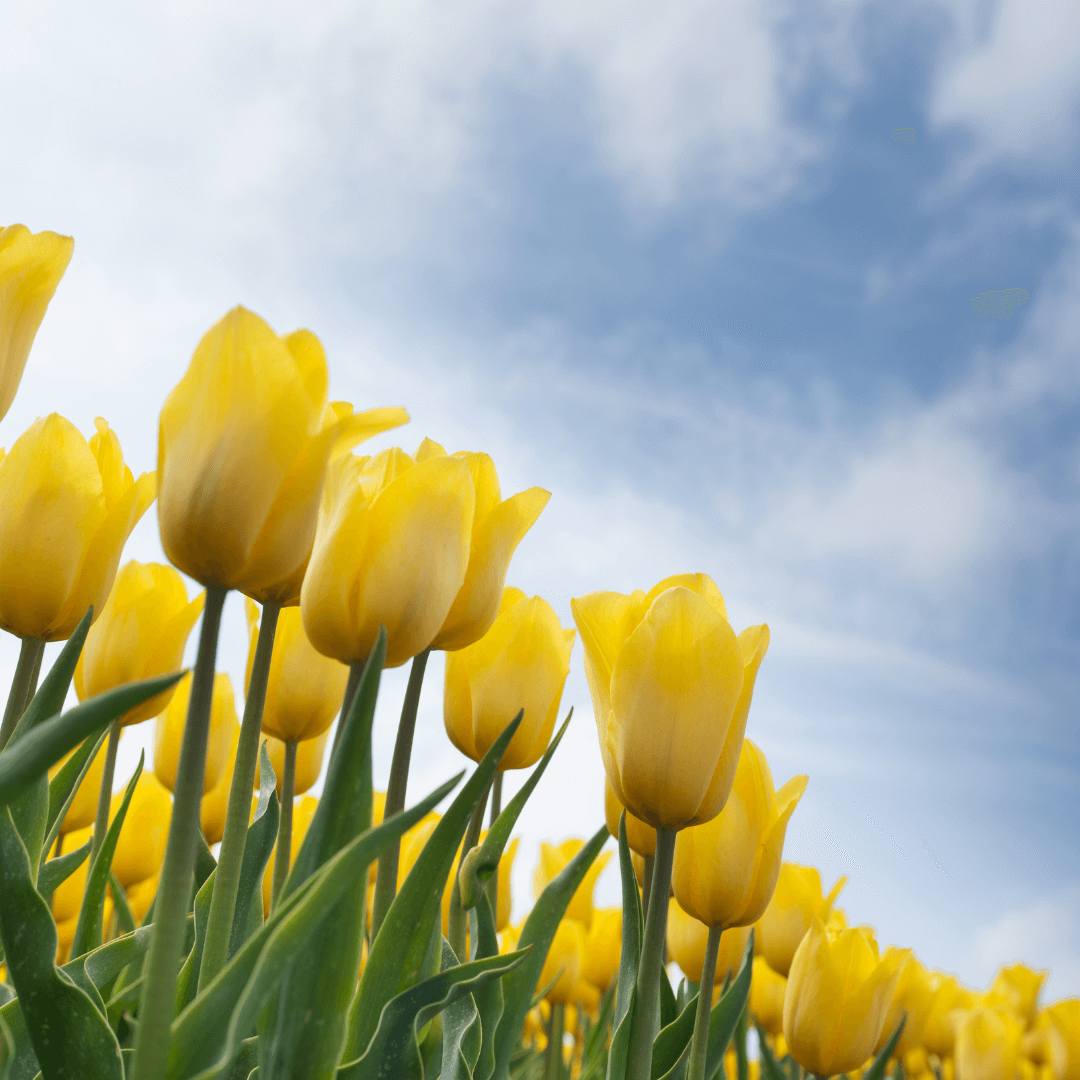
The Meaning Behind Tulip Symbolism
Tulips are survivors. They have survived travel over centuries and survived the madness that was Tulipomania.
These are a treasured flower in the garden and any bouquet. Making it a great gifts to anyone who you are trying to send positivity.
They are beautiful to look at and bring vibrancy to any room. But, there are also important symbolic meanings to note.
RELATED: 543 Brief Quotes And Sayings About Life To inspire Joy
Perfect Love
There is a type of love that we yearn for, a type of love that overpowers any other human feeling. This love fills your whole body, every organ, and through your bloodstream.
Tulips are a symbol of this kind of love. When you give a tulip to someone you love, whether this is a romantic interest or partner, parent, grandparent, child, or best friend, you are showing them just how much you love them.
This symbolism is down to the tale of Prince Farhad and his love Shirin, which we explore later in the article. We will explore how there are multiple versions of this story.
Yet they both involve his becoming brokenhearted after learning Shirin is dead.
Whilst trying to deal with grief, Farhad kills himself. And red tulips grow in the place where his blood had hit the ground.
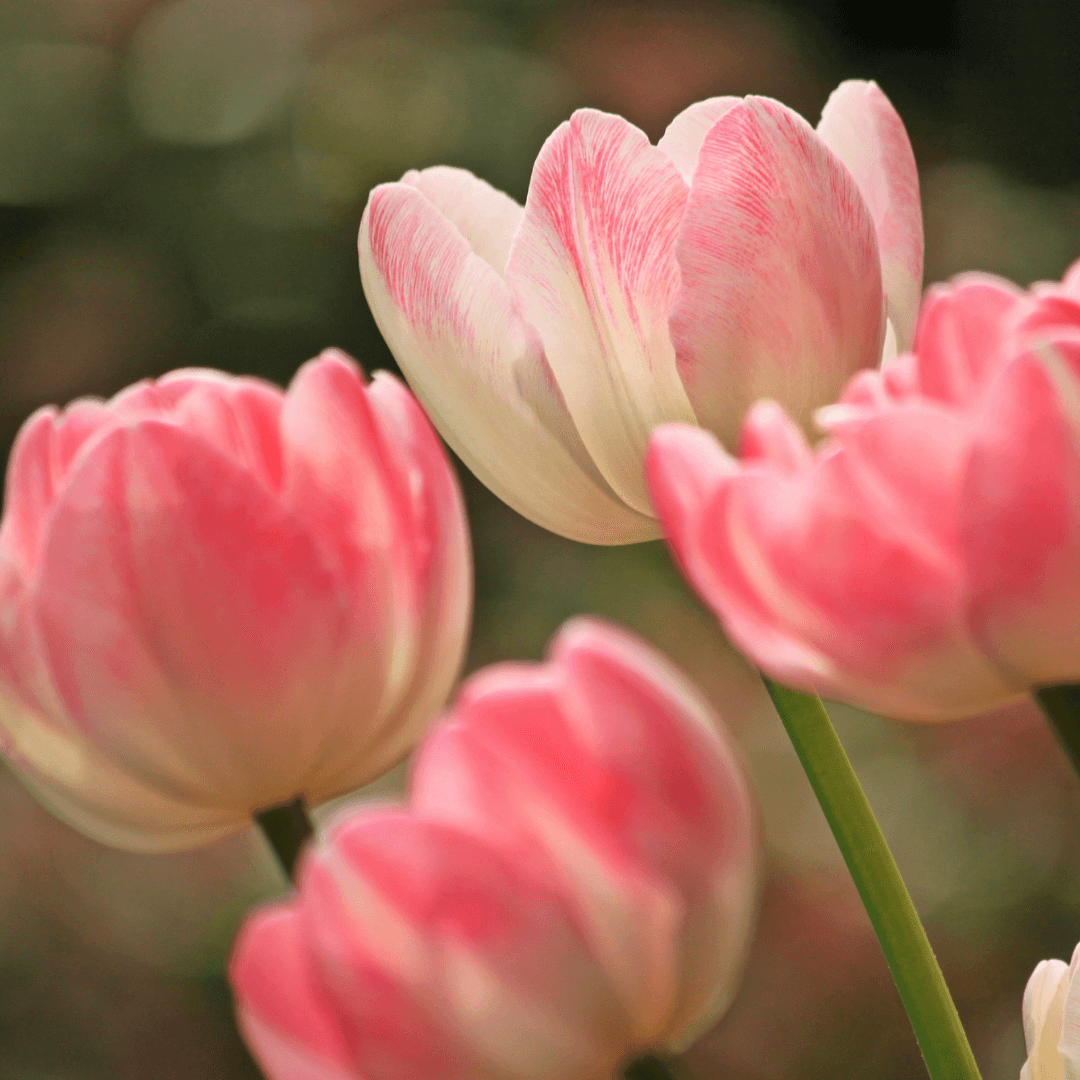
RELATED: Magnolia Flower Meaning, Spiritual Symbolism, Color Meaning & More
Rebirth
If you have ever grown tulips yourself, you will know that they wait underground through the winter, until they emerge once more in the springtime.
This is why they symbolize rebirth. The symbolism of these flowers makes them perfect gift to someone starting a new chapter in his life.
11th Wedding Anniversary Flower
The flower is also a symbol of the 11th wedding Anniversary. The velvety black center represents a lover's heart that has been darkened by the heat of passion.
The power in rival roses in the red version of the flower and the sweet and innocent charm of simple joy with the yellow version.
It’s no wonder that in addition to the other symbolism, in flower language, a bouquet of tulips represent utmost grace and elegance. The perfect wedding anniversary celebration flower.
Unlocking the Significance of Tulip Colors
| Tulip Color | Meaning |
| Red | Perfect love |
| Yellow | Happiness and hope |
| Purple | Royalty and admiration |
| White | Purity and forgiveness |
| Orange | Enthusiasm and energy |
| Pink | Affection and caring |
The tulip’s symbolism is also related to the color of the flower. Here we look at the symbolism behind each color.
Red Tulip
Red is tied to romance and this remains true for the color of the flower. These types of tulips symbolize the love found in the tale of Farhad and Shirin.
They are great to give to a lover as they symbolize passion and romance.
Yellow Tulip
When you see a bunch of yellow tulips, you will find it difficult not to smile. The flowers are tied to cheerfulness, joy, and good luck and spread happiness wherever you take them.
RELATED: 411 Joyful Quotes About Smiles To Bring Sunshine
Purple Tulips
The color purple has been tied to royalty for centuries.
This means if you are looking for a flower that represents royalty, grace, and elegance, look no further than the purple tulip.
White Tulips
White tulips are also an excellent choice if you are looking for another elegant flower.
They also represent purity and respect and they are a good way to say ‘I’m Sorry’. They are a popular flower to say ‘Thank You’ with.
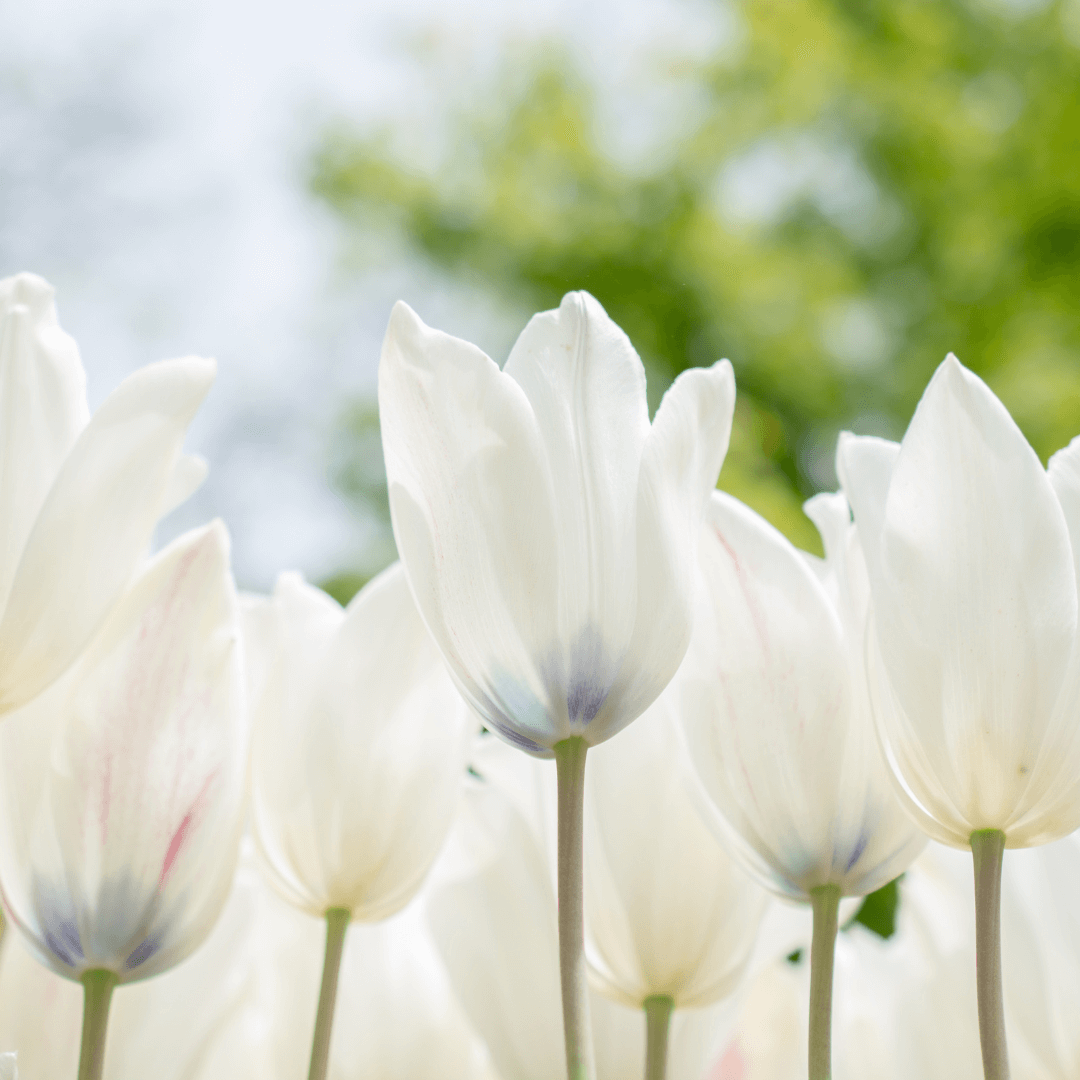
Exploring the Profound Botanical Traits of Tulips
Most tulips are between 20 and 60 centimeters in height, yet some can reach 70-80 centimeters high.
However, whilst they can reach this height, some prefer to stay low and stay at almost ground level. Tulips that lay this low are popular as the tulip humilis.
They measure around 6-10 cm in height and they are often smaller than the horticultural varieties.
Tulips bloom between March and May, or until June with later blooming varieties. The earliest flowers are botanical tulips and these are famous as kaufmanniana tulips and fosteriana tulips.
The ones that bloom in May are popular as parrot tulips, fringed tulips, fleur-de-lis tulips, and viridiflora tulips.
Tulips rise to the sky. The botanical species as well as most other varieties have three sepals and three petals. These floral pieces have the same color and appearance and this gives them the impression of six different colored leaves.
The flowers take a variety of forms, either in a section, an ovoid, a star, or a goblet. They can be open and reveal the heart of the flower, but sometimes this is a different color. They can also be closed.
Tulips on Special Occasions: Their Symbolic Presence
As we mentioned, the flower, just like the daffodil symbolizes rebirth and new beginnings. This is because they bloom in the spring and continue into the summer months.
Meaning, they are great gift for special occasions that mark the start of a new chapter, such as moving house.
If you do decide to give tulips as a housewarming present, you need to be aware of how long tulips stay fresh. With the proper cut and care, they can last up to ten days.
To prolong their life, you should provide them with plenty of fresh water and keep them out of the sun.
You should also give them flower food. If you give someone a tulip bulb to plant themselves, you will need to tell them to plant the bulbs in the fall.
After spending all winter in the ground, these bulbs will then shoot up with leaves and flowers, symbolizing the start of Spring.
Tulips are also great on Valentine’s Day. If you opt to give your partner tulips on a special occasion, ensure you choose red tulips. These symbolize love, romance, and passion.
A Valentine’s Day tulip arrangement is an unforgettable way to express unspoken love. This will remind your loved one of how much you treasure them.
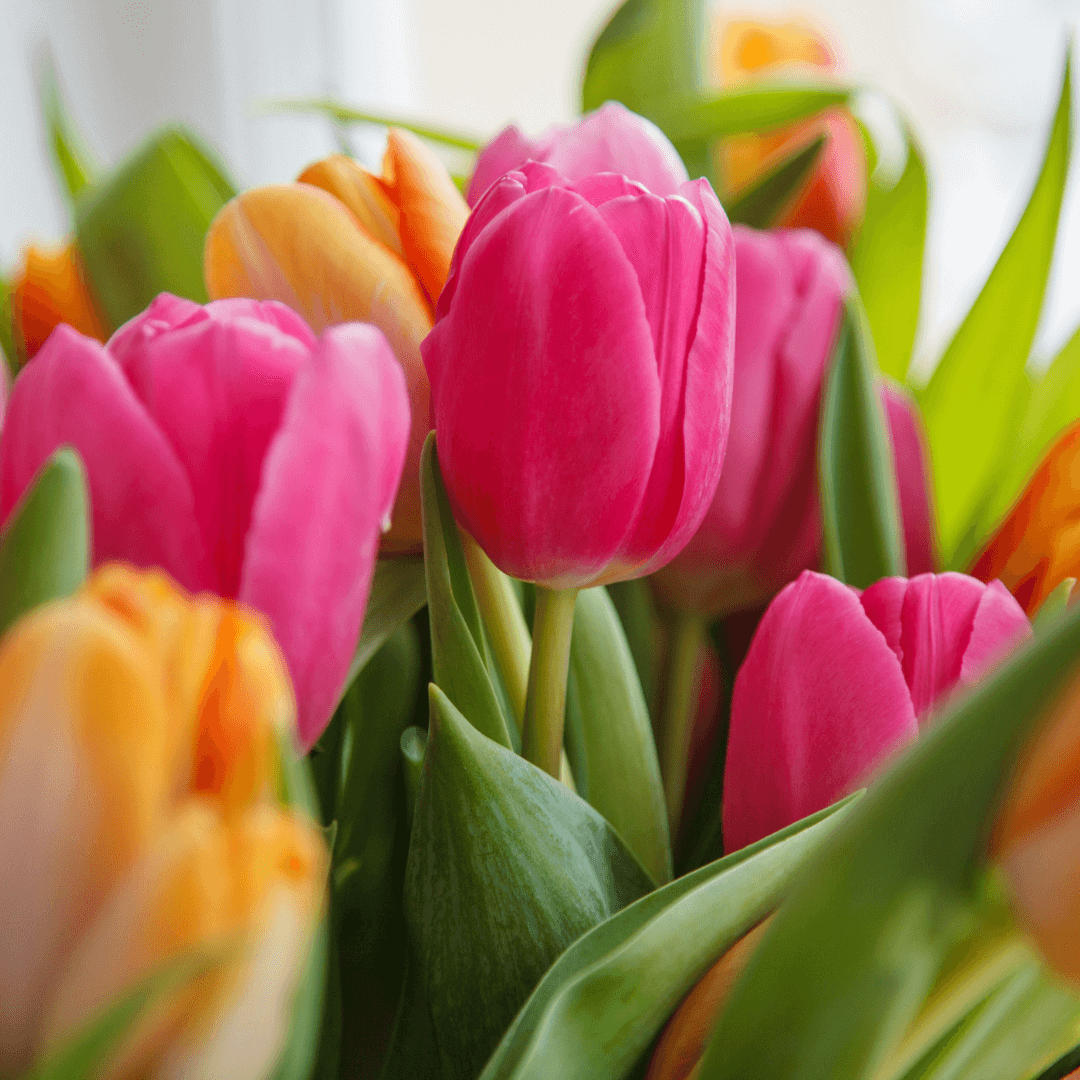
The Cultural Significance of Tulips
| Culture | Symbolism |
| Netherlands | Symbol of the country |
| Turkey | Symbol of perfect love |
| Persian Culture | Symbol of Nowruz and rebirth |
| Victorian England | Symbol of declarations of love |
Tulips have a rich cultural significance in various parts of the world, often symbolizing a range of emotions and values. Here's an overview of the cultural significance of tulips:
- The Netherlands: Perhaps the most famous association with tulips is in the Netherlands, where they are seen as a symbol of the country. Dutch tulip festivals, particularly the Keukenhof Gardens, are world-renowned. Tulips were introduced to the Netherlands in the late 16th century and became a significant part of Dutch culture. The "Tulip Mania" in the 17th century even led to a speculative frenzy, making tulips a symbol of wealth and luxury.
- Turkey: The tulip is believed to have originated in Turkey, where it holds historical and cultural significance. In Turkish culture, the tulip represents paradise on Earth and is associated with the Turkish "Tulip Era" during the 18th century. Tulips also have a role in Turkish art, literature, and motifs.
- Iran: In Iran, tulips are known as "laleh" and are widely celebrated. They are considered the symbol of the Persian New Year (Nowruz) and have appeared in Persian art and poetry for centuries.
- Victorian England: In Victorian England, tulips represented a declaration of love. Different colors and varieties of tulips conveyed specific meanings. Red tulips symbolized true love, while yellow ones were associated with cheerful thoughts.
- Spirituality: In some cultures, tulips symbolize spirituality and transcendence. They are associated with personal growth, divine connection, and purity.
- Love and Passion: Tulips are often used as a symbol of love and passion, and red tulips, in particular, are a declaration of true love. They can be a part of romantic gestures and gifts.
- Perfection: In certain contexts, tulips represent perfection and beauty. Their graceful and symmetrical petals contribute to this symbolic meaning.
RELATED: Lily Flower Meaning, Spiritual Symbolism, Color Meaning & More
Versatile Applications of Tulip Flowers
In the Second World War, there are tales of people eating the bulbs of tulips, especially when the Dutch famine took place. J.H. Warmerdam tells the story of a man who grew up in the Netherlands during the war. The bulbs ended up giving people skin rashes.
Though this is not a common practice to eat the bulbs anymore, many people still enforce their belief that tulips should not be ingested. Despite this belief, the petals of the flowers are often in use as a salad garnish and in other popular dishes.
Whether used as an expression of deep love or to brighten up someone's day, the flowers are vibrant. Making it a great way to bring some positivity into life or pop a splash of color into any room!
The Symbolic Essence of a Tulip Flower Tattoo
The main meaning of a tulip tattoo is love. If you are obsessed with romance and believe love is an important part of life, a tulip tattoo might be just the tattoo for you. Even if you are single, this might be a tattoo to say you wish to find love. Hoping that you will be with that future partner forever.
Since tulips also represent rebirth as spring is when everything comes back after winter, the tattoo can symbolize the beginning of a stage in life and the start of something big. It can also represent female empowerment.
White tulip tattoos represent forgiveness. The white tulip can symbolize not only having a lot of forgiveness in general but also as a promise to forgive someone specific.
Yellow tulip tattoos can represent joy, but also hopeless love and betrayal, and purple tulip tattoos represent nobility, elegance, and courage. Black tulip tattoos can be quite dark and symbolize the wearer does not want to die without their life partner.
It says you want to die at the same time as them and then you would not have to live without them and vice versa.
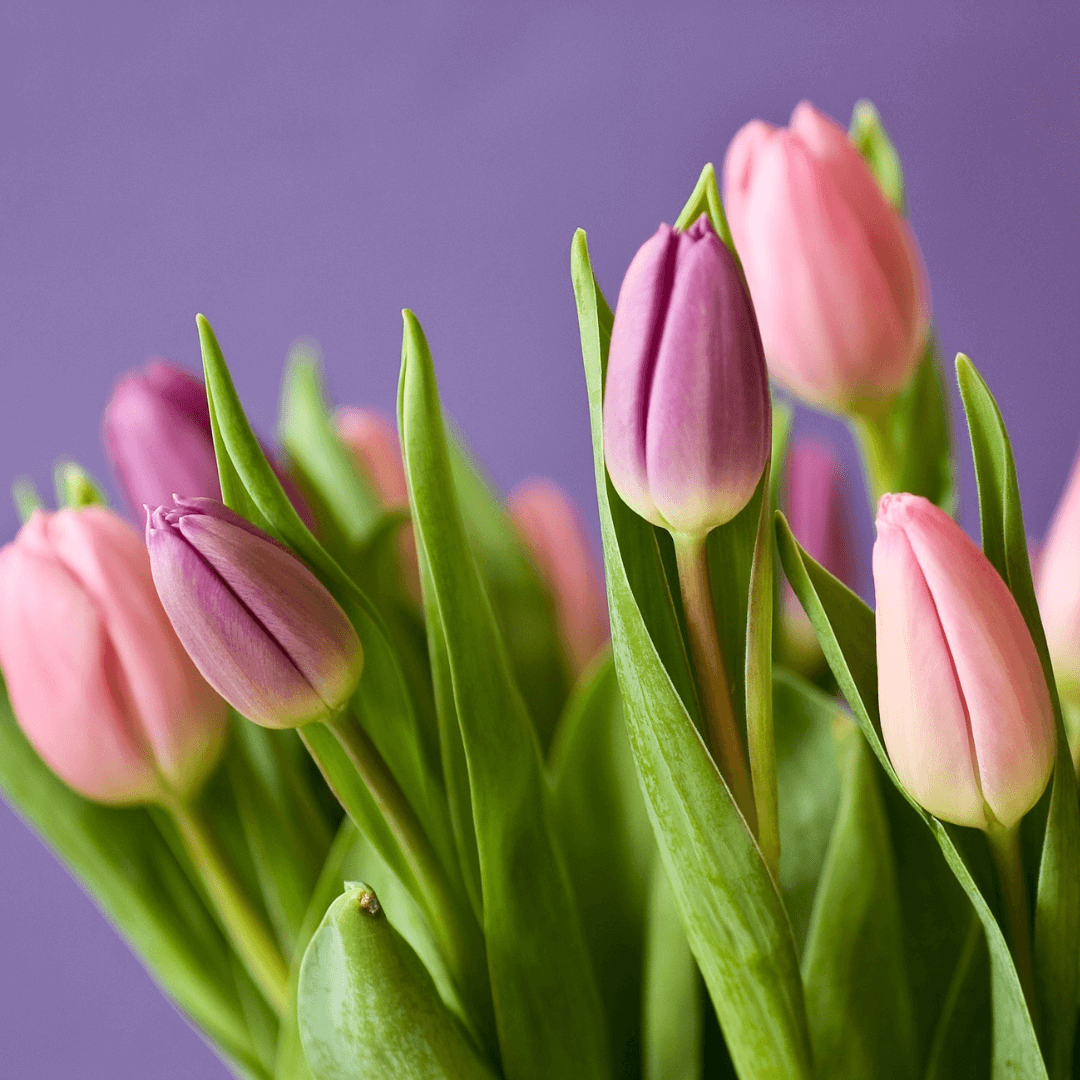
Tulip Mythological Significance
Tulips do not have strong mythological significance in the way some other flowers or plants do in various mythologies. However, they have made appearances in folklore and stories throughout history. Here are a few mythological and historical associations with tulips:Turkish Folklore
In Turkish folklore, tulips are said to symbolize the love between two lovers who were separated and reunited. They are often associated with love and the concept of perfect love.
Persian Culture
Tulips are believed to have originated in ancient Persia (modern-day Iran), and while not a significant part of Persian mythology, they hold cultural importance. They are associated with the Persian New Year (Nowruz) and are considered a symbol of rebirth and the arrival of spring.
Goddess Cybele
In Greek and Roman mythology, the tulip's association with the goddess Cybele is mentioned in some sources. Cybele is often depicted with a crown of flowers, and tulips may have been among them. However, this connection is not prominent in mythological stories.
Medieval Europe
In medieval Europe, the tulip was sometimes seen as a symbol of paradise and resurrection, likely due to its vivid colors and the fact that it blooms early in the spring.
Tulip Mania
While not a mythological association, the "Tulip Mania" of the 17th century in the Netherlands is a historical event where tulip bulbs became extremely valuable and led to a speculative frenzy. This episode is often referenced as a cautionary tale in economic and financial history.
Tulip Symbolism Unveiled: Intriguing Facts and Trivia
Tulips have an array of symbolisms associated with them, which can vary depending on their color and cultural context. Here are some interesting facts and trivia about tulip symbolisms:
- Love and Passion: Red tulips are often seen as a declaration of love and passion, making them a popular choice for romantic occasions, including anniversaries and Valentine's Day.
- Royal Symbolism: In the Netherlands, the tulip holds royal significance and is considered the emblem of the Dutch royal family. The Dutch Royal Family is often referred to as the "House of Orange," and the orange tulip is a symbol of the Dutch monarchy.
- Perfect Love: In Persian culture, red tulips symbolize perfect love. They are often given as a declaration of love and affection.
- White Tulips: White tulips are associated with purity and forgiveness, making them a popular choice for apologies and reconciliation.
- Yellow Tulips: Yellow tulips are often associated with cheerful thoughts and sunshine. They can symbolize happiness and hope.
- Purple Tulips: Purple tulips have been linked to royalty and elegance. They convey a sense of grandeur and admiration.
- Variegated Tulips: Tulips with multicolored petals symbolize beautiful eyes, which can be a charming compliment.
Final Thoughts
We hope after reading this article you have gained a better understanding of what the tulip flower means in terms of its symbolism, botanical characteristics, cultural significance, and more.
Remember, the meaning of a tulip depends entirely on the color and though in general, the flower represents love and rebirth, their colors carry much deeper forms of symbolism.
The tulip is a beautiful flower and if you ever want to add a bit of color back into someone’s life, it could be the flower for them.
Frequently Asked Questions
What do tulips symbolize in different colors?
Red tulips symbolize love and passion.
White tulips represent purity and forgiveness.
Yellow tulips convey happiness and hope.
Purple tulips are associated with royalty and admiration.
Orange tulips are linked to enthusiasm and energy.
Pink tulips represent affection and caring.
What is the cultural significance of tulips in the Netherlands?
Tulips hold a special place in Dutch culture and are often associated with the Dutch Royal Family. The orange tulip is a symbol of the Dutch monarchy. The Netherlands is also famous for its tulip fields and annual tulip festivals.
Do tulips have any historical significance?
Yes, tulips played a significant role in the "Dutch Tulip Mania" during the 17th century, when tulip bulbs were traded at exorbitant prices. This period is often cited in discussions of speculative economic bubbles.
What do variegated tulips symbolize?
Tulips with multicolored petals, known as variegated tulips, symbolize beautiful eyes, making them a charming choice to compliment someone.
Are there any specific tulip traditions or customs in different cultures?
Yes, in Persian culture, red tulips are given as a declaration of perfect love. In Turkish culture, the red tulip represents abundance and prosperity and is a common motif in art and textiles.
Can tulips be used in art and literature?
Yes, tulips have been featured in various art forms, from paintings to poetry. They are often used to symbolize love, beauty, and other emotions in literature and art.
How are tulips associated with spring and renewal?
Tulips are some of the first flowers to bloom in spring, making them a symbol of renewal and the end of winter. They are often seen as a sign of new beginnings.
Are there any fun facts about tulips and their symbolism?
Tulip petals are edible and can be used in culinary applications. Additionally, the variety of colors and shapes of tulips has led to a rich tapestry of meanings associated with these flowers.
Can tulip festivals be enjoyed around the world?
Yes, various countries, such as the Netherlands and the United States, host annual tulip festivals, showcasing stunning displays of tulips in a wide range of colors and varieties. These festivals celebrate the beauty and diversity of tulips.

